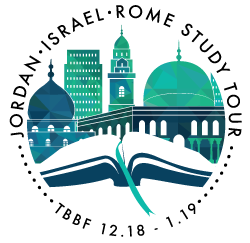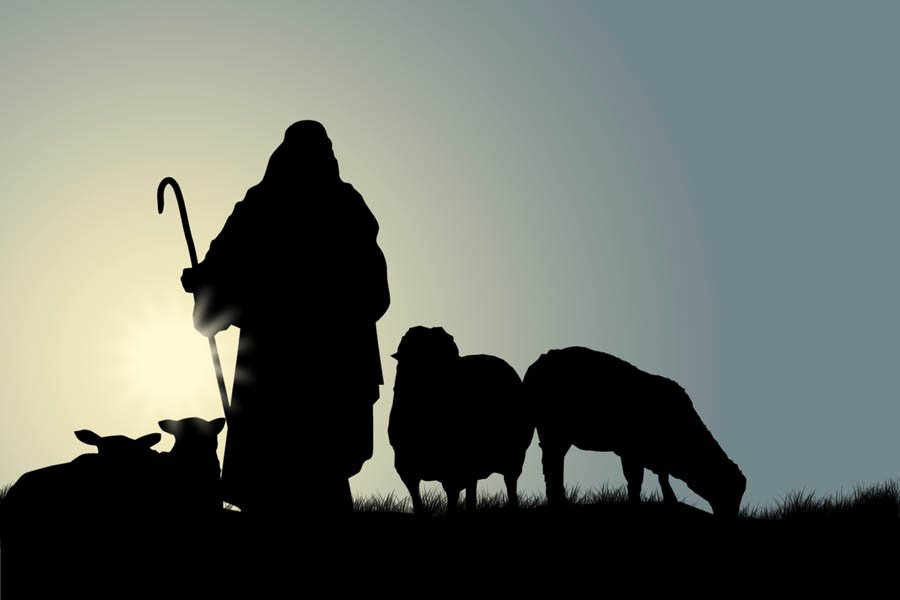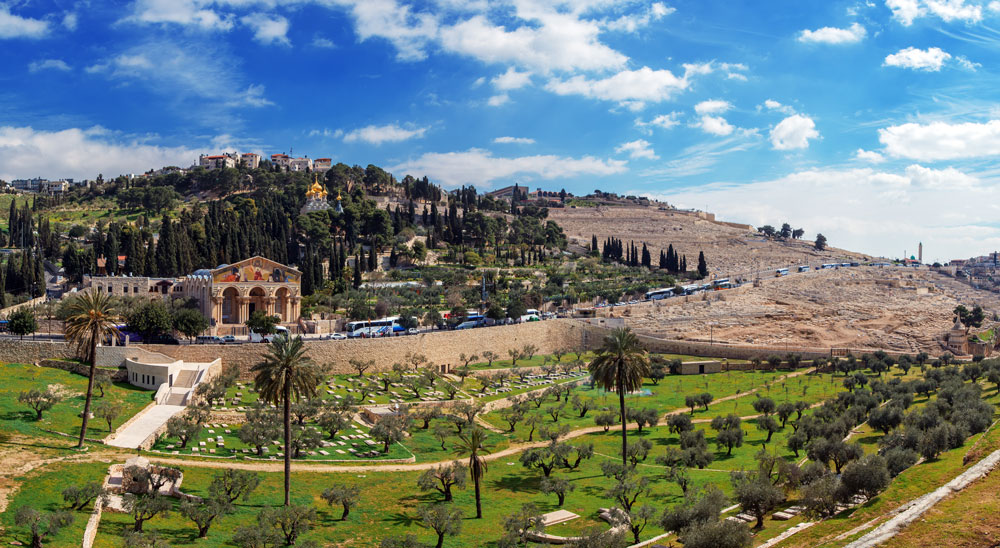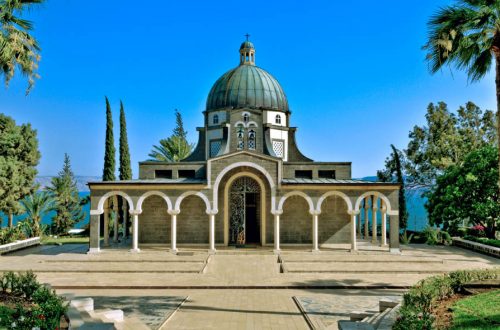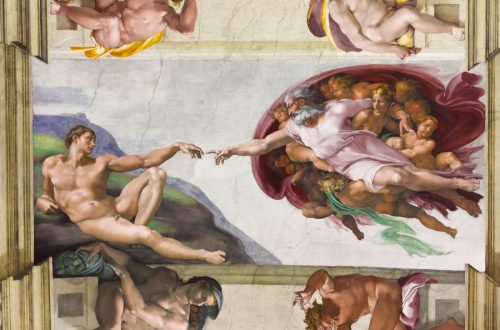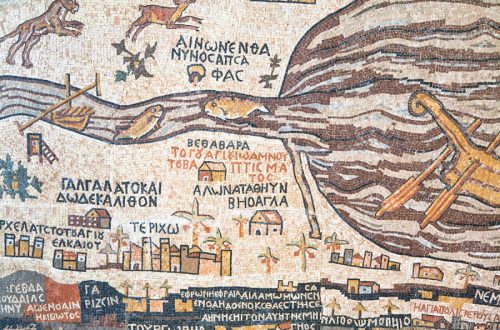Mt. of Olives
Mt. of Olives: Also known as Mt. Olivet, this mountain range actually has 3 peaks running on the eastern side of Jerusalem. It is named for the many olive groves that line its slopes. On the slope running down to the eastern wall of the city is a Jewish cemetery that has been in use for over 3000 years, and contains 150,000 graves. Included are graves traditionally assigned to Zechariah, Absalom, Haggai, and Malachi. Jewish tradition holds that those buried closest to Messiah when he appears will rise first.
From the Mt. of Olives we can see Temple Mount, and the walls of the City of David. If there is time, we’ll leave the bus on top, and walk down the mountain road all the way to the Garden of Gethsemane. As we walk we’ll pass hundreds of graves, decorated with stones and above ground. We’ll pass Dominus Flevit (see below) and the Church and Garden of Gethsemane. The Mt. of Olives is very important to the biblical course of history: 2 Samuel 15:30; 1 Kings 11:7,8; Ezekiel 11:23; In Zechariah 14:4 a prophecy states that Messiah will one day stand on the Mount and it will be split in half.
Dominus Flevit: This is a small Fransciscan church located on the upper western slope of the Mount of Olives in Jerusalem. Dominus Flevit, which means “the cry of the Lord,” commemorates the time when Jesus stood and wept over Jerusalem (Luke 19:41). The current Dominus Flevit Church was commissioned by the Franciscans, who still run the site, and designed by Italian architect Anton Barluzzin. Constructed in 1954, the church is in the shape of a tear drop to symbolize the Lord’s tears. The current church stands on the ruins of a 7th-century church, some mosaics of which still remain. The western window in Dominus Flevit provides a beautiful view of the Temple Mount.
During the construction of the modern church, an ancient Jewish tomb dating to as early as the first century BC was discovered beneath. The tomb and several ossuaries (bone boxes) can be seen by visitors.
Southern Temple Mount and Steps

Excavations begun by Benjamin Mazar in 1968 were the largest earth-moving archaeological projects in Israel. Work continued until 1978 but has since resumed in the 1990s under the direction of Ronny Reich. These excavations are the most important for understanding the Temple Mount because of the impossibility of excavating on the mount itself.
A street in this area was fully uncovered in the mid-1990s and dates to the decades before the city’s destruction by the Romans in AD 70. The street is 32 feet (10 m) wide and was paved with large slabs up to a foot thick. It was covered with massive stones pushed down by the Romans; only part of the street has been cleared by the excavators.
The western flight of stairs leading to the main entrances of the Temple Mount was 200 feet wide. Excavators uncovered the easternmost part of this staircase with its alternating long and short steps. Some suggest that the fifteen long steps may have been one of the locations where pilgrims sang the fifteen Psalms of Ascent (120-34) as they went up to worship.
(from BiblePlaces.com)
Bethlehem
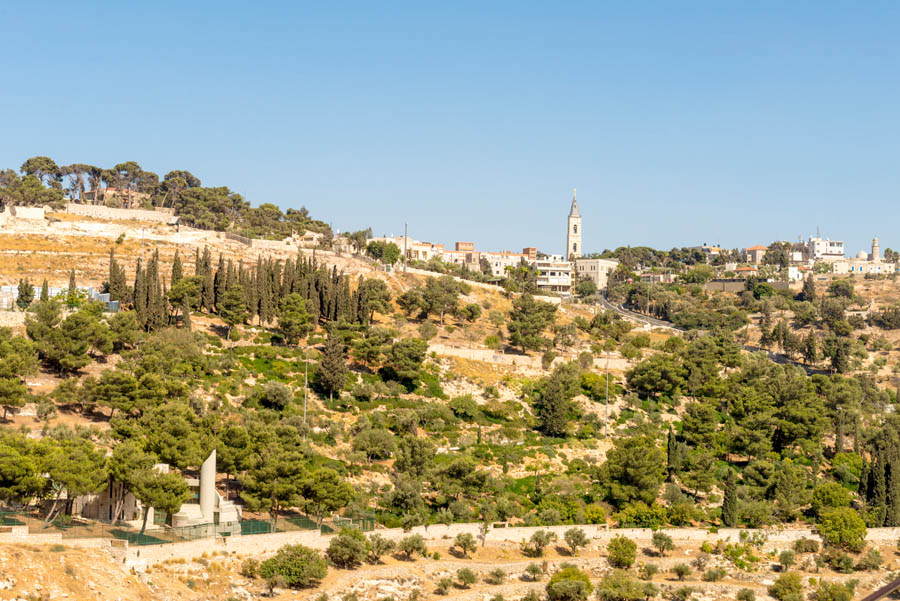
The West Bank city of Bethlehem, about 9km south of Jerusalem, is celebrated by Christians as the birthplace of Jesus Christ.
Here Mary gave birth in a cave used for animals. Here the local shepherds came to worship the baby, and here the Three Wise Men from the east came to pay homage and present their gifts. Here too, 1000 years before Christ, Bethlehem was the birthplace of David, Israel’s second king. Here David was anointed as king by the prophet Samuel after being brought in from tending his father’s sheep.
The city of Bethlehem (in Hebrew its name means “house of bread”) perches on a hill at the edge of the Judaean desert. The cave where the birth took place and the manger stood can now be visited underneath the huge Basilica of the Nativity. This is the oldest complete church in the Christian world.
During the 20th century, Bethlehem was controlled in turn by Turkey, Britain, Jordan and Israel. Hostilities led to thousands of displaced Palestinians living in official refugee camps nearby. In 1995 Bethlehem came under the administration of the Palestinian Authority, though Israel retained control of entrances and exits. During times of Israeli-Palestinian conflict, the city has seen many confrontations.
Maintaining the Christmas spirit, Franciscan friars daily celebrate the Eucharist in the Grotto of the Manger and at noon perform a procession around the holy places. Bethlehem’s residents, who depend largely on pilgrims and tourists for their livelihood, are known for their olive wood carvings, mother-of-pearl jewellery (a craft introduced by the Franciscans) and distinctive embroidery.
In the words of one pilgrim, Della Shenton, “Bethlehemites are cheerful, peaceful, gentle people, who have welcomed pilgrims for centuries: They now stand waiting for visitors.”
Various historical sites in the Bethlehem area:
- Church of the Nativity – the oldest complete church in the Christian world, was built by the emperor Justinian in the 6th century. It replaced the original church of Constantine the Great, built over the cave venerated as Christ’s birthplace, and dedicated in AD 339.
- Grotto of the Nativity – the place of Christ’s birth is a dimly-lit rock cave. Instead of a star above, a 14-point silver star on the marble floor of the Grotto of the Nativity bears the words “Hic de Virgine Maria Jesus Christus natus est” (Here Jesus Christ was born to the Virgin Mary)
- St. Jeromes Cave – From a cave beneath the Church of the Nativity in Bethlehem came the most enduring version of the Bible ever translated. In this underground study — pleasantly cool in summer but chilly in winter — St Jerome spent 30 years translating the Scriptures from Hebrew and Greek into Latin.
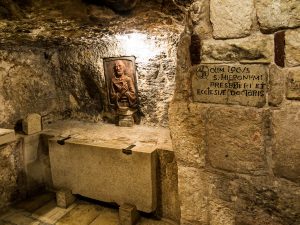
- Shepherd’s Field – Caves where shepherds “kept watch over their flock” still abound in the area east of Bethlehem. Here, the Gospel of Luke tells us, an angel announced the birth of Jesus. The traditional place of the angel’s visit is the town of Beit Sahur. Originally known as the Village of the Shepherds, it is now an eastern suburb of Bethlehem.
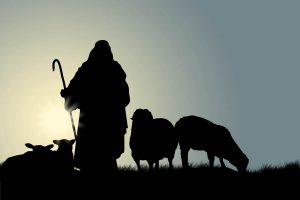
- Tomb of Rachel – The death of Rachel, beloved wife of the patriarch Jacob, is remembered on the Jerusalem-Hebron road north of Bethlehem. The tomb, a small building with a white dome, is now hidden behind a long bunker-like structure with guard towers and barbed wire.
- Field of Boaz – The romantic story of the Moabite woman Ruth, who is remembered for one of the most celebrated statements of devotion in the Old Testament, is linked to a field near Bethlehem. The Field of Boaz is east of the Palestinian town of Beit Sahour, in the fertile plain that descends to the Dead Sea.
Related Biblical References:
- 2 Sam 15:25-30 – David flees from Absalom
- 1 Kings 11:6-10 – Solomon builds high places for the gods of his wives
- Ezekiel 11:23 – God’s glory leaves Jerusalem
- Zech 14:1-4 – 2nd Coming of the Messiah
- Psalms 120-134 – Psalms of Ascent
- Micah 5:2-5 – Birth of Messiah prophesied
- Luke 2:1-20; Matt 1:18-25 – The birth of Jesus
- Matt 2:1-12 – The visit of the Wise Men
- Matt 2:16-18 – Massacre of the Holy Innocents
